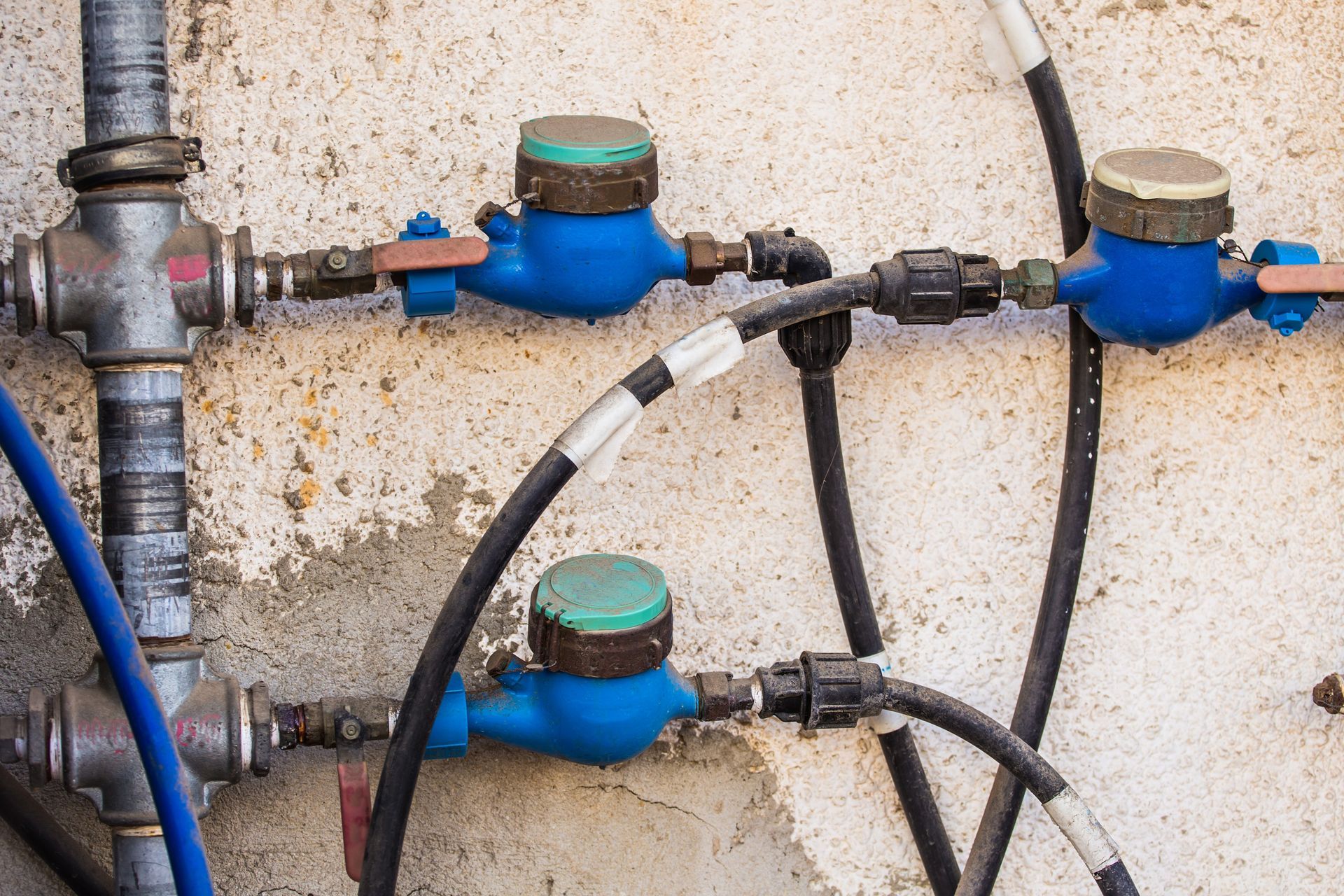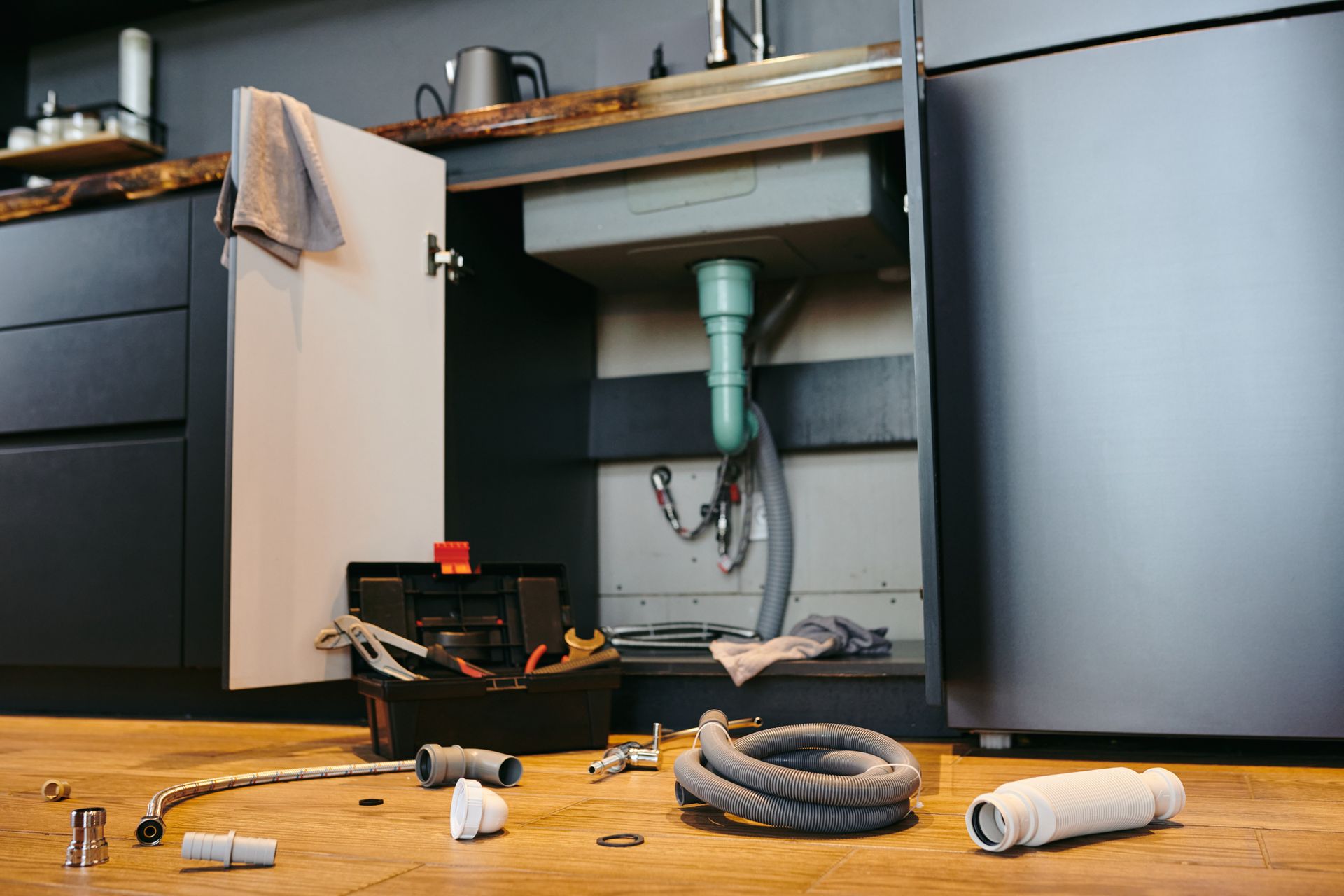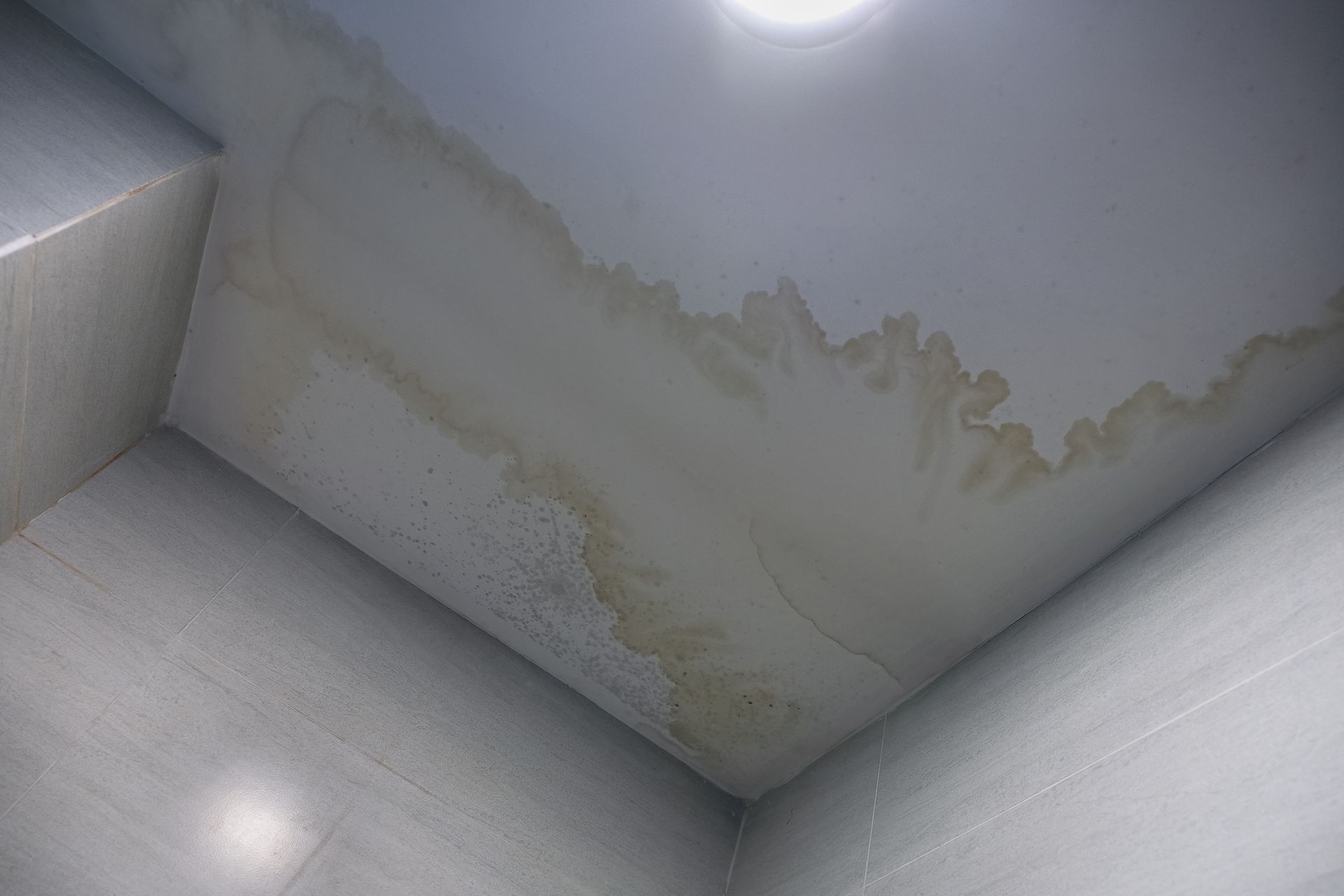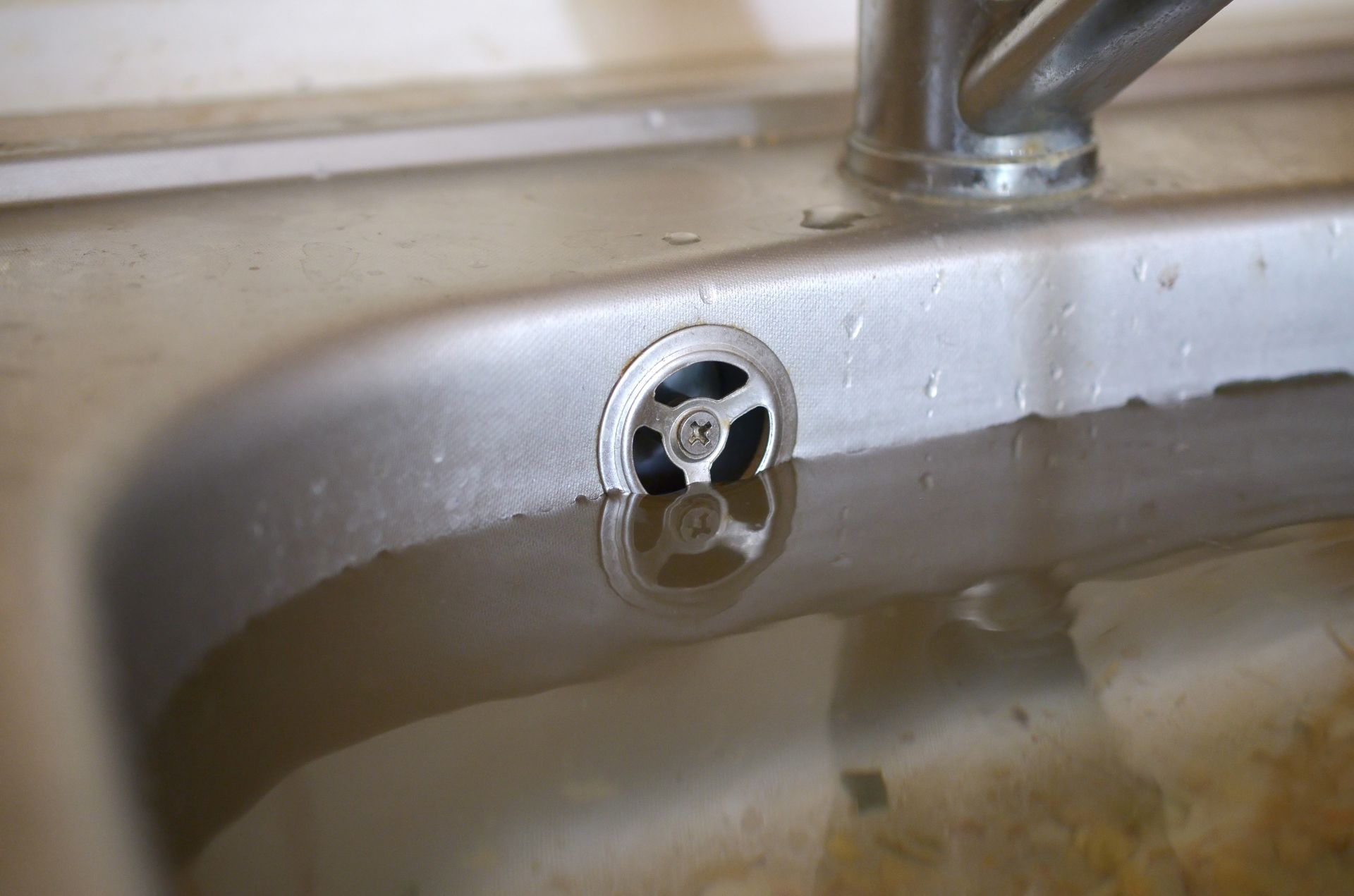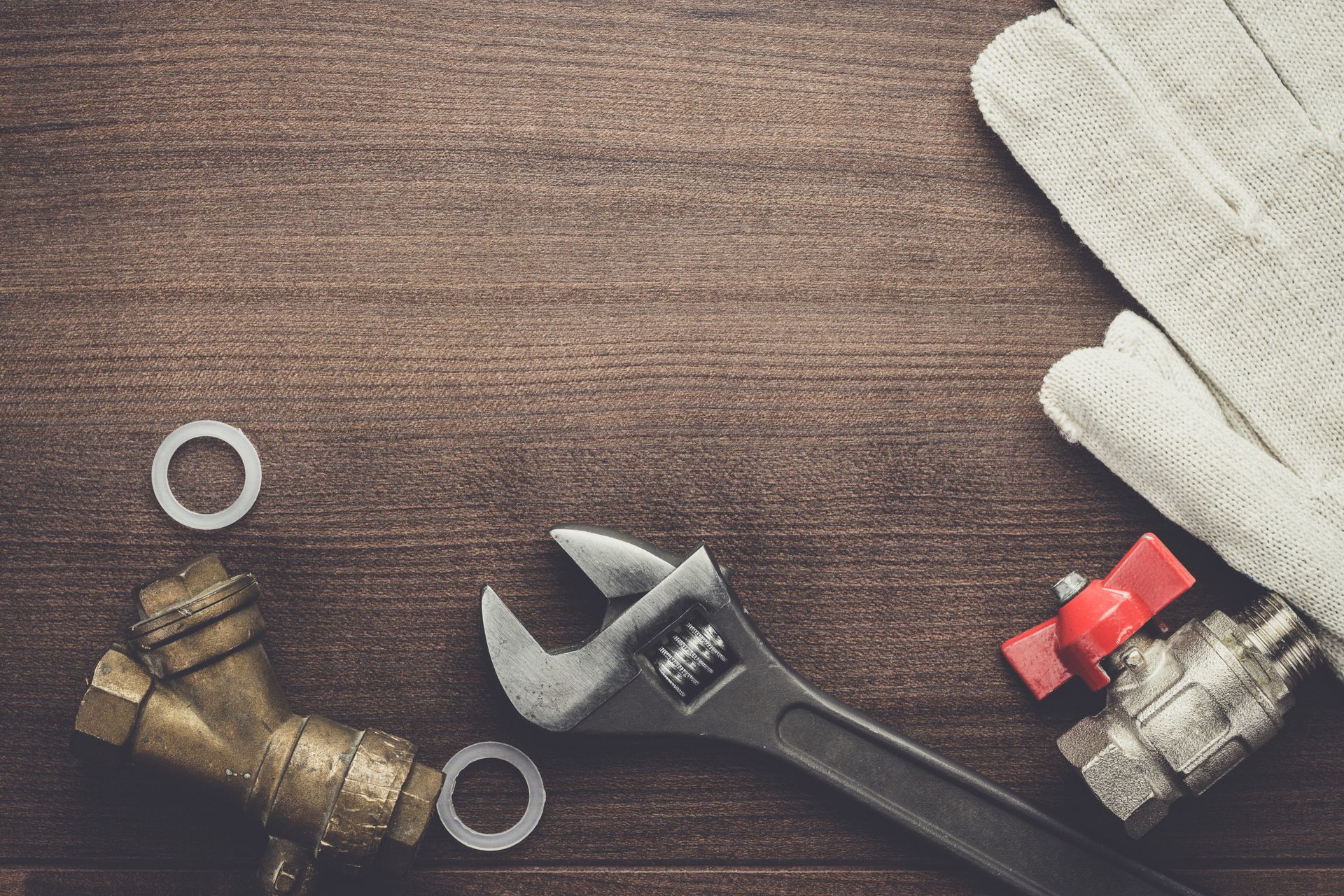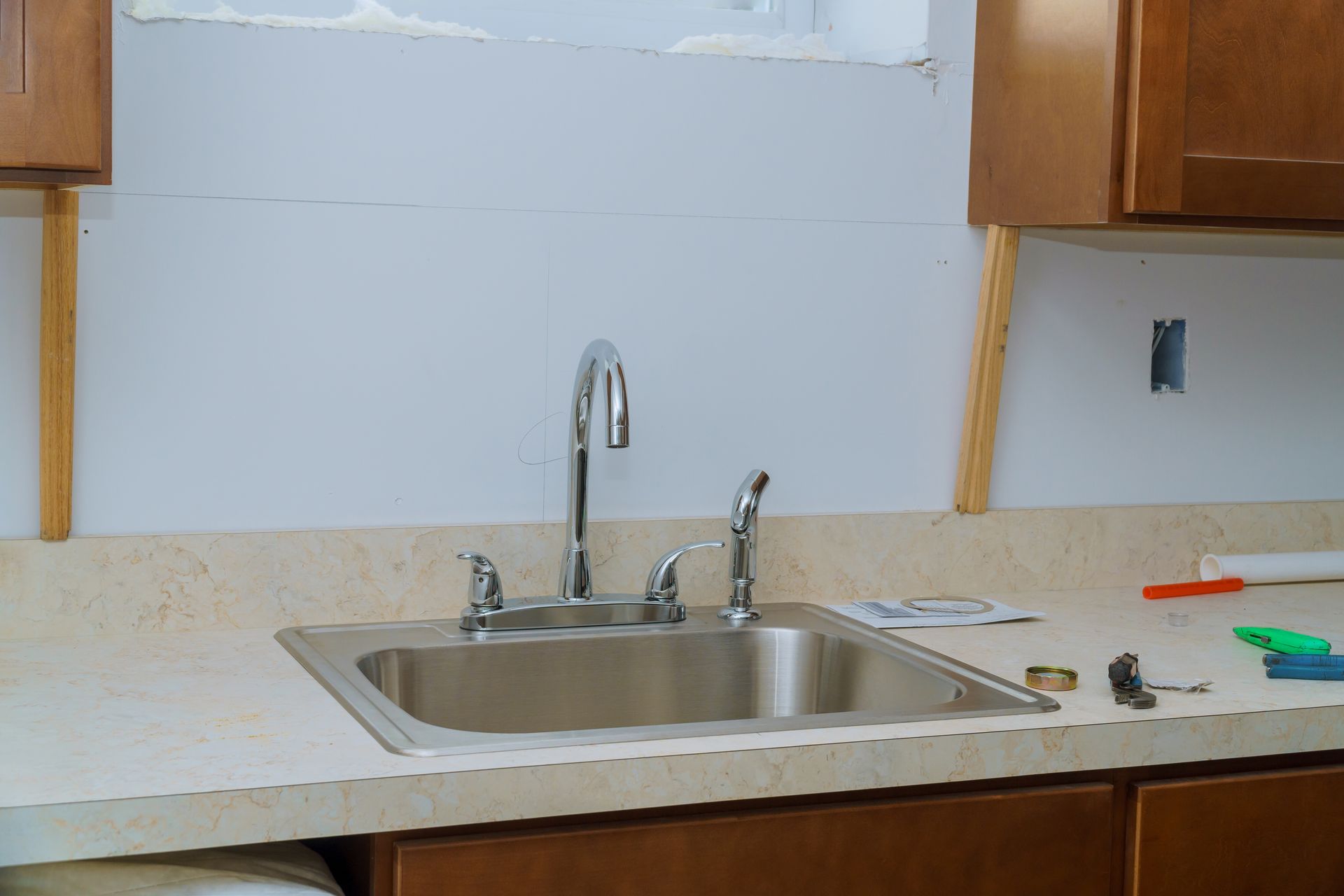October 4, 2024
This guide will help you identify the common causes of plumbing leaks that can affect your home and provide you with effective strategies to prevent them. Understanding these issues is important for maintaining a healthy plumbing system and avoiding costly repairs. Whether it's aging pipes, high water pressure, or tree root intrusion, there are practical steps you can take to protect your plumbing and ensure its longevity. Let’s explore these causes in detail and equip you with the knowledge to safeguard your home. Understanding Plumbing Leaks Your plumbing system plays a vital role in your home's functionality, and often, leaks can compromise this system. Understanding plumbing leaks begins with recognizing their causes and implications. By addressing leaks promptly, you can maintain the integrity of your plumbing and prevent costly water damage. Definition of Plumbing Leaks There's no denying that plumbing leaks are a significant concern for homeowners. A plumbing leak occurs when water escapes from pipes, fixtures, or fittings due to damage, corrosion, or misalignment. These leaks can lead to: Waste of water Structural damage Increase in utility bills Importance of Addressing Leaks Quickly While it may seem easy to overlook a small leak, acting quickly is necessary to prevent more serious problems down the line. Small leaks can escalate, resulting in: Extensive water damage Mold growth Costly repairs Increased water bills Plumbing issues can spiral out of control if not addressed swiftly. A leak that may appear minor can lead to structural damage over time, potentially compromising the integrity of your home. Furthermore, unchecked leaks can encourage mold growth, which poses health risks to you and your family. By tackling leaks early, you save more in the long run, both in repair costs and water expenses. Overview of Common Signs of Plumbing Leaks Now that you understand leaks and their importance, it's necessary to recognize the common signs indicating a plumbing leak. Some typical indicators include: Unexplained water stains Increased water bills Damp spots on walls or ceilings Sound of running water when no fixtures are in use This awareness is key to maintaining your plumbing system. For instance, if you notice water stains on your walls or ceilings, it could signal a leak hidden behind the surface. Additionally, a sudden spike in your water bill without a change in usage could also point to leakage issues. Being vigilant about these signs can help you catch problems before they develop into more significant concerns. Types of Plumbing Leaks While plumbing leaks can arise from various sources, understanding the types can help you identify the problem faster. Here are some common types: 1. Pipes and Fittings Description: Leaks occurring at joints, seams, or locations of wear in your pipes. 2. Fixtures and Appliances Description: Leaks from sinks, toilets, and appliances like dishwashers. 3. Sewer Lines Description: Leaks causing sewage to back up into your home. 4. Water Supply Lines Description: Leaking pipes serving your home’s water needs. 5. Drainage Systems Description: Issues in drains that result in flooding or overflows. Pipes and Fittings For effective plumbing, your pipes and fittings must be properly installed and maintained. Leaks in these areas often stem from aging materials or poor installation, leading to misalignments and weak seals. Regular inspection can prevent these issues and extend the lifespan of your plumbing system. Fixtures and Appliances While fixtures and appliances, such as toilets, sinks, and dishwashers, are often overlooked, they can be significant sources of leaks. Regular inspection and maintenance of these items can help you detect problems early and prevent costly water damage. Common Causes: Worn-out seals Faulty installation General wear over time Frequently check the components of your fixtures for signs of wear, such as stained or discolored areas, which often indicate a leak. Promptly addressing any issues can save you money in repairs and help maintain the integrity of your plumbing system. Sewer Lines There's a possibility of leaks occurring in your sewer lines, which can lead to health hazards and unpleasant odors. These leaks can arise from: Tree root intrusion Ground movements Pipe corrosion It’s important to monitor your sewer lines regularly, as they can cause significant damage when leaks go unnoticed. Scheduling inspections and maintenance can help prevent blockages and ensure your sewer system operates efficiently. In cases of severe leaks, professional intervention may be necessary to address underlying issues and restore proper functionality. Common Causes of Plumbing Leaks Despite being a common issue, plumbing leaks can lead to significant water damage and costly repairs if left unattended. Identifying the various causes of leaks in your home is imperative for preventative measures. From aging infrastructure to environmental factors, understanding these elements will empower you to maintain your plumbing system effectively. 1. Aging Infrastructure and Pipe Materials Even though modern plumbing materials have improved over the years, many older homes still contain pipes made from outdated materials, such as galvanized steel or iron. Over time, these pipes can corrode and weaken, increasing the likelihood of leaks. Prevention Tips: Regular Inspections : Schedule regular plumbing inspections to assess pipe conditions. Timely Replacements : Replace old or corroded pipes with modern materials like copper or PEX. Water Treatment Systems : Install systems to reduce corrosive elements in your water supply. 2. High Water Pressure Any increase in water pressure beyond the normal range can lead to significant strain on your plumbing system, causing leaks at joints and fixtures. High pressure can even lead to cracked or burst pipes, which can be both stressful and expensive to fix. Prevention Tips: Install a Water Pressure Regulator : Maintain optimal pressure levels (typically between 40-60 PSI). Regular Monitoring : Use a pressure gauge to check water pressure periodically. Professional Assessment : Consult a plumber if you notice signs of high water pressure, such as banging pipes or rapid wear of appliances. 3. Environmental Factors Environmental factors can also contribute to plumbing leaks. Soil movement, fluctuating temperatures, and tree root intrusion may all impact your pipes negatively. It’s imperative to monitor these natural elements to avoid unforeseen plumbing problems. Prevention Tips: Mindful Landscaping: Plant trees and shrubs away from plumbing lines. Avoid planting large trees near sewer lines and water pipes. Pipe Insulation: Insulate pipes exposed to extreme temperatures to prevent freezing and bursting. Property Monitoring: Regularly check for signs of soil erosion. Ensure proper drainage around your foundation. Monitor for tree root encroachment. Consider professional assessments if you live in an area prone to ground shifts. By taking these steps, you’ll minimize the risk of environmental factors causing plumbing leaks in your home. Step-by-Step Guide to Leak Detection After identifying the signs of a potential plumbing leak, it's imperative to conduct a systematic detection process. Here’s a structured approach to help you locate leaks effectively: Steps to Detect Leaks Perform a visual inspection of visible pipes and connections. Check your water meter for unusual activity when not in use. Look for wet spots on walls, ceilings, or floors. Test water pressure to determine possible high-pressure issues. Utilize specialized leak detection tools if necessary. Visual Inspection Techniques For effective leak detection, start with a thorough visual inspection. Look for signs of water damage, such as: Discoloration on walls or ceilings Damp spots on floors Unusually high water bills Pay close attention to joints and connections, as these areas are common leak points. Early detection through visual cues can help prevent further damage to your plumbing system. Tools and Equipment for Detecting Leaks While performing leak detection, it's helpful to have specific tools on hand: Pipe Wrench: For tightening joints. Pressure Gauge: For measuring water pressure. Moisture Meter: For detecting hidden leaks within walls. Advanced Equipment: Such as infrared cameras or acoustic leak detection devices for identifying leaks that aren't visible to the naked eye. Having the right equipment enables you to conduct comprehensive inspections and address issues proactively. When to Call a Professional For many homeowners, determining whether to handle a leak detection problem independently or call a professional can be challenging. Consider hiring a professional plumber if: Signs of leaks persist despite your efforts. You suspect a significant issue with your plumbing system. The leak is in a hard-to-reach or hidden area. Professional plumbers have the expertise and advanced tools to provide a thorough diagnosis and proper repair, saving you time and money in the long run. Recommendations for Aging Plumbing Systems Not all plumbing systems are built to last, especially those with aging pipes and outdated materials. By taking proactive measures, you can extend the lifespan of your plumbing system and minimize leaks. Regular inspections, timely upgrades, and consistent maintenance can keep your plumbing functioning smoothly and avoid costly disruptions. Assessing Pipe Conditions Aging pipes can lead to significant leak issues in your home. Start by: Scheduling Regular Inspections : Have a professional plumber evaluate the condition of your pipes. Identifying Signs of Wear : Look for corrosion, rust, and other signs of deterioration. Early Detection : Address issues before they escalate into major leaks. Upgrading to Modern Materials One of the best ways to prevent leaks is to consider upgrading to modern piping materials. Older homes often feature pipes made from galvanized steel or iron, which are prone to corrosion over time. Replacing these with materials such as copper or PEX can enhance durability and reduce the risk of leaks. Benefits of Modern Materials: Enhanced Resistance : Better resistance to corrosion and wear. Temperature and Pressure Flexibility : Accommodate shifts in temperature and pressure that can lead to leaks. Longevity : Longer lifespan compared to outdated materials. Regular Maintenance Requirements Incorporate regular maintenance into your routine to keep your plumbing system in top shape. This includes: Flushing Pipes : Remove sediment and buildup. Cleaning Drains : Prevent clogs and blockages. Inspecting for Wear : Regularly check for signs of leaks or corrosion. Regular maintenance helps prevent issues from escalating into significant leaks and costly repairs. Understanding Water Pressure Implications Understanding the implications of water pressure on your plumbing system is crucial to prevent leaks and other issues. High water pressure not only strains your pipes but can also lead to damage at joints and fixtures, causing costly repairs if left unchecked. Maintaining optimal pressure levels is vital for the longevity of your plumbing system. Causes of Fluctuating Water Pressure Fluctuations in water pressure can arise from various factors, including: Municipal Supply Changes : Variations in the water supply from your local utility. Excessive Demand During Peak Hours : High usage times can cause pressure spikes. Malfunctioning Pressure Regulator : Faulty equipment can lead to inconsistent pressure levels. These fluctuations can lead to stress on your pipes, which may cause leaks or bursts over time. Regularly monitoring your home's water pressure is a crucial preventative measure. Solutions and Preventive Measures One effective approach to managing water pressure issues is to install a water pressure regulator. This device helps maintain optimal pressure levels, typically between 40-60 PSI , ensuring your plumbing system functions smoothly. Additional Preventive Measures: Regular Monitoring : Use a pressure gauge to check water pressure periodically. Professional Adjustments : Hire a plumber to adjust your system if pressure issues persist. Install Pressure-Reducing Valves : These valves help control the flow and pressure of water entering your home. Understanding how to address water pressure concerns can further aid in maintaining your plumbing system. Aside from installing a pressure regulator, you should monitor your water pressure periodically using a pressure gauge. If you notice persistent issues, consulting a professional plumber can help identify the root cause, whether it's related to your home’s plumbing or the municipal supply. Being proactive in these areas can save you from headaches down the line and ensure your system remains in good condition. Long-Term Effects on Plumbing There are significant long-term effects on your plumbing system due to sustained high water pressure: Leaks and Ruptured Pipes : Excess pressure can cause pipes to crack or burst. Accelerated Aging of Pipes : Materials like galvanized steel or copper can corrode faster under stress. Joint Damage : High-pressure conditions can cause joints to separate, leading to water damage in your home. Ensuring that your water pressure remains within the recommended range can help extend the life of your plumbing system and reduce potential repairs in the future. Role of Professional Plumbers For homeowners, hiring a professional plumber is essential for ensuring the integrity and longevity of your plumbing system. With their expertise, they can accurately diagnose issues, perform high-quality repairs, and provide preventative maintenance that significantly reduces the chance of plumbing leaks. Relying on professionals minimizes the risk of costly water damage and repairs while giving you peace of mind that your plumbing is in safe hands. When to Hire a Professional Consider hiring a professional plumber when: Persistent Leaks: Signs of leaks persist despite your efforts. Low Water Pressure: Frequent drops in water pressure. Frequently Clogged Drains: Recurrent drain blockages. Pipe Replacement: Needs involving pipe replacement or sewer inspections. Major Repairs: Situations requiring specialized tools and knowledge. Identifying Licensed Professionals To find licensed plumbing professionals in your area: Check Online Reviews: Look for feedback from previous clients. Ask for Recommendations: Get referrals from friends or family. Verify Credentials: Ensure the plumber is licensed through local licensing boards. Experience and References: Check for experience with specific services and ask for references. Multiple Quotes: Gather multiple quotes before making a decision. Licensed plumbers are more likely to adhere to industry standards and safety protocols, ensuring that the work done on your plumbing system meets local regulations. Additionally, well-reviewed plumbers often have proven track records, which can give you confidence in their ability to resolve any plumbing issue. Always ask for references and don’t hesitate to gather multiple quotes before making a decision. Importance of Compliance with Local Codes Compliance with local codes is vital when it comes to plumbing work. These regulations are in place to ensure safety, efficiency, and environmental protection. When you engage a licensed plumber, you benefit from their knowledge of these codes, ensuring that all work is performed to the highest standard and in accordance with legal requirements. Benefits of Compliance: Avoid Fines and Legal Issues: Ensure all plumbing work meets local regulations. Safety: Adherence to codes ensures safe and efficient plumbing systems. Property Value: Properly coded plumbing systems can enhance your property's value. Future Proofing: Compliance ensures that plumbing systems are up-to-date with current standards. To avoid potential fines, legal issues, or unsafe conditions, it’s important that all plumbing installations and repairs comply with the local building codes. This adherence protects you and your property and helps maintain the overall integrity of your plumbing system, minimizing the likelihood of future leaks. A professional plumber will handle this aspect with diligence, providing you with the reassurance that your home is safeguarded against plumbing-related problems. The Importance of Education and Awareness Many homeowners often underestimate the significance of understanding plumbing systems. By prioritizing education and awareness, you empower yourself to identify early signs of potential issues, such as leaks or pressure changes. This knowledge not only aids in timely problem-solving but can also save you from costly repairs and water damage down the line. Consistent monitoring and understanding of your plumbing system will ensure a more efficient and longer-lasting infrastructure within your home. Resources for Homeowners If you are keen on improving your plumbing knowledge, numerous resources are available to assist you: Local Libraries: Access books and manuals on plumbing maintenance. Websites: Find guides, video tutorials, and articles covering various plumbing topics. Community Centers: Attend informational sessions and workshops. Online Forums: Engage with other homeowners and plumbing professionals for advice and tips. Workshops and Training Opportunities Participating in workshops and training opportunities can provide hands-on experience and real-world insights into plumbing maintenance and troubleshooting. Such events can help you: Learn Basic Repairs: Gain skills for minor plumbing fixes. Understand Pipe Maintenance: Learn how to maintain and inspect pipes. Stay Updated on Technologies: Discover the latest plumbing technologies and solutions. Workshops typically cover a range of topics, including basic repairs, pipe maintenance, and the latest technologies in plumbing systems. Many local hardware stores and community colleges offer classes that cater to different skill levels. Participating in these workshops not only equips you with practical skills but also connects you with other homeowners who share similar concerns and experiences. Staying Updated on Plumbing Trends Staying informed about the latest plumbing trends can significantly impact your system's efficiency and maintenance. Consider the following: Smart Home Integrations: Utilize smart plumbing devices for better control and monitoring. Eco-Friendly Solutions: Implement water-saving fixtures and sustainable materials. Innovative Technologies: Explore advancements like tankless water heaters and high-efficiency appliances. A commitment to staying updated involves regularly consulting industry publications, blogs, and forums where plumbing professionals share their insights. By doing so, you can learn about novel solutions and upcoming products that could further protect your plumbing system. Embracing continuous learning in this field will help you prevent issues before they arise and maintain a healthy plumbing system for years to come. Conclusion Summing up, understanding the common causes of plumbing leaks can empower you to take proactive measures to avoid costly repairs. By regularly inspecting your plumbing system, addressing issues like high water pressure, and being mindful of tree roots and mineral buildup, you can maintain a healthy plumbing environment. Implementing the tips outlined in this article will help safeguard your home and ensure that your plumbing operates efficiently for years to come. FAQ Q: What are some common signs of a plumbing leak? A: Homeowners can look for several indicators of a plumbing leak, including: Wet spots or water stains on walls, ceilings, or floors. Unexplained increases in water bills. The sound of running water when fixtures are off. Mold or mildew growth in areas with plumbing. Low water pressure or discolored water coming from faucets. If you notice any of these signs, it’s important to take action quickly to assess the situation and prevent further damage. Q: How often should I have my plumbing inspected? A: It's advisable to schedule a plumbing inspection at least once a year. Regular inspections allow professionals to check for existing issues, such as corroded pipes or signs of leaks that may not be noticeable to homeowners. Additionally, you should consider having an inspection done: When purchasing a new home. Before major renovations or remodeling that involve plumbing. If you notice any symptoms of potential leaks or plumbing issues. Keeping up with inspections can help detect problems early, potentially saving homeowners from costly repairs down the line. Q: Are there eco-friendly solutions to prevent plumbing leaks? A: Yes, there are several eco-friendly methods homeowners can adopt to minimize the risk of plumbing leaks: Use natural cleaning agents: Opt for enzyme-based cleaners instead of chemical drain cleaners to maintain clear pipes. Install low-flow fixtures: Reduce stress on the plumbing system while conserving water. Sustainable materials: Choose eco-friendly piping materials like PEX or copper during plumbing upgrades. Water-saving practices: Fix leaks promptly and use water-efficient appliances to conserve water and reduce pressure on the plumbing system. By using these measures, homeowners can help protect their plumbing systems while also being environmentally conscious. This guide will help you identify the common causes of plumbing leaks that can affect your home and provide you with effective strategies to prevent them. Understanding these issues is important for maintaining a healthy plumbing system and avoiding costly repairs. Whether it's aging pipes, high water pressure, or tree root intrusion, there are practical steps you can take to protect your plumbing and ensure its longevity. Let’s explore these causes in detail and equip you with the knowledge to safeguard your home.
 Working Hours : Mon-Fri (8.00 AM - 5.00 PM) and Sat (8.00 AM - 12.00 PM)
Working Hours : Mon-Fri (8.00 AM - 5.00 PM) and Sat (8.00 AM - 12.00 PM)

